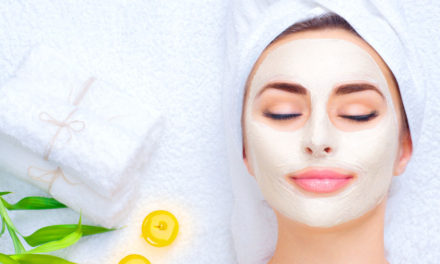®Life has its own way of reminding us that things don’t always go the way we want them to. Even hair growth changes its course. Sometimes your growing hair decides to curl up and grow back into your skin, causing an angry, red bump. Yep, ingrown hairs are incredibly annoying and frustrating. However, they are pretty normal and aren’t something to worry about. Regardless, it is important to understand what ingrown hairs are, their causes, prevention, and treatment.
What Is an Ingrown Hair and What Does It Look Like?
Normal hair growth happens in an upward direction, with the hair rising above the skin layer. An ingrown hair happens when hair grows back into your skin without making it to the surface. This causes skin inflammation in the form of a red bump that may itch, hurt, or be otherwise irritating. In some cases, it may become infected and turn into a pimple or boil-like wound. Since this happens more often to people who use shaving as a hair removal method, it is refered to as “razor bumps,” although razors are not necessarily the culprit.
What Are Symptoms of an Ingrown Hair?
The skin is inflamed because of the abnormal hair growth, which causes irritation. Symptoms include
- A pimple-like red bump or a group of bumps
- Irritation or discomfort
- Pain
- A pus-like or boil-like sore
- Visible ingrown hair underneath the skin
What Are Common Areas for Ingrown Hairs?
Ingrown hairs can appear in almost all areas where you remove hair and are more likely to appear in areas where you commonly shave. They can grow in your scalp, face, chin, neck, armpits, chest, pubic area, and legs.
What Causes Ingrown Hairs?
Sometimes the cause of ingrown hairs are dead skin cells that clog the hair follicle. The clogging may cause the hair to grow sideways underneath your epidermis (skin) instead of growing up. People with coarse or curly hair may be more prone to ingrown hairs. Sometimes, when curly hair is cut, the edge of the hair can bend back and grow towards the skin, piercing its surface. However, anyone can experience ingrown hairs regardless of whether they have straight or curly hair. You can sometimes find yourself with ingrown hairs after waxing, tweezing, or shaving. When the hair grows back, it can pierce the skin and get trapped underneath.
When skin areas are exposed to a lot of friction, like scratching or rubbing, ingrown hairs can also occur. The hairier you are, the better chance you have of getting ingrown hairs. Thus, people with higher levels of certain sex hormones that make them hairier may be more prone to ingrown hairs after using hair removal methods.
Will Ingrown Hairs Go Away on Their Own?
Usually, ingrown hairs go away on their own. According to the Mayo Clinic, it takes an ingrown hair an average of one month to completely disappear. However, in some, it can last up to six months, especially if the hair is really stuck beneath the skin’s surface. Eventually, the hair can grow to the surface on its own and the red bump disappear. This can be frustrating, so it’s best to understand how to best prevent the growth of ingrown hairs in the first place.
How to Prevent Ingrown Hairs?
An ounce of prevention is worth a pound of cure. There are a few things you can keep in mind and routines that you can add to your skin care regimen that can definitely save you from a lot of heartbreak.
Here are a few ways to prevent yourself from being at risk of having ingrown hairs.
1. Exfoliate often
As mentioned before, dead skin cells can cause ingrown hairs. They can clog the hair follicle and cause the hair to grow sideways. Regular exfoliation can prevent your skin from having dead skin cells on the surface. It is advisable to exfoliate once a week using a body exfoliant to remove dead skin cells. Not only does this make you less prone to having ingrown hairs, it also leaves your skin a lot smoother. Castle Baths® offers several high quality Body Scrubs for exfoliation.
2. Take it easy on the razor
Shaving is probably the biggest culprit of ingrown hairs. This is because shaving causes hair to grow back sharper, which means it can easily pierce the skin. Although shaving can be a very convenient, cheap, and time-saving option, it puts you at a higher risk of getting those angry, red bumps. Waxing also puts you at risk of ingrown hairs, because sometimes hairs just break off below the skin’s surface. Waxing may also cause dry skin, which results in dead skin cells clogging the hair follicle. It is best to invest in other hair removal methods that put you at a lower risk of having ingrown hairs. Safer hair removal options include hair removal creams that dissolve hair, or a laser or electrolysis treatment to target the hair follicle for good.
3. Use the right tips when shaving
However, if you just can’t do away with the razor for good, it’s best to know the right tips when shaving so you can minimize the possibility of having ingrown hairs. Try these tips when shaving:
- Trim before you shave.
- Replace your blade from time to time to ensure you use a razor with a sharp edge.
- Before shaving, it is best to warm up your skin and use a lubricating shaving gel or cream.
- Shave in the same direction as your hair growth.
- Use as few strokes of the razor as you can. Doing this can lessen the chances of your hair slipping back or piercing into your skin.
- After every stroke, rinse the blade with water to ensure you get the most out of the succeeding strokes.
- Use a cool washcloth, or a soothing gel or lotion after you shave
4. How to remove ingrown hairs safely
When you did everything right, but still managed to wake up with an angry red bump on your chin, it’s important to stay calm. It’s just a bad (hair) day, not the end of the world. Firstly, never prick it, no matter how tempting it is. You may end up pushing the ingrown hair deeper into your skin, which makes it harder to remove. You may also spread bacteria to other parts of your face.
While ingrown hairs usually go away without you interfering, it may take a long time before they are completely gone. If you experience ingrown hairs that are so close to the surface that you can see them, then this is sign that you can safely remove them yourself. However, if the hair lies deep below the skin’s surface, don’t risk it. You may want to leave it alone or contact your dermatologist.
If you belong to the former, here are a few tips to consider before conducting the procedure by yourself.
- Disinfect the area with an antibacterial natural soap.
- Apply a warm, wet washcloth over the affected area to help open pores and the follicle.
- Hold the washcloth over the affected area for one minute.
- Using a sterilized needle or tweezers, gently push out the ingrown hair until it reaches the surface.
- When you can see the hair rise above the epidermis, use a tweezer to fully pull it through.
- After you have successfully pulled out the ingrown hair, wash the area again with soap and water to avoid a possible infection.
- Apply a warm washcloth when necessary to help ease any form of irritation or redness.
Do not try to pick out an ingrown hair that is under the skin. This can lead to infection and may also push the hair deeper into the skin, increasing the time it takes to heal.
Again, if the hair lies deep beneath the skin, don’t take the leap of faith. It’s better to be safe than sorry. You may want to leave it for a few weeks and observe any improvements. If it doesn’t improve, you may want to consult your doctor to remove the ingrown hair professionally. Trying to pick out an ingrown hair that is deep beneath the skin may result in infection, complications, and a longer healing time.
When Should You Seek Medical Attention for Ingrown Hairs?
There are cases when your ingrown hair may cause an infection, manifested by pus, extreme soreness, or pain. The area may also feel warm to the touch. You may be able to treat the infection at home using such treatments as tea tree oil and over the counter hydrocortisone cream to relieve the itching.
If the infection does not improve and instead worsens after a few days, you may need to seek medical attention. Your doctor may prescribe a steroid or antibiotic cream for your infection and perform a medical procedure to remove the hair.















